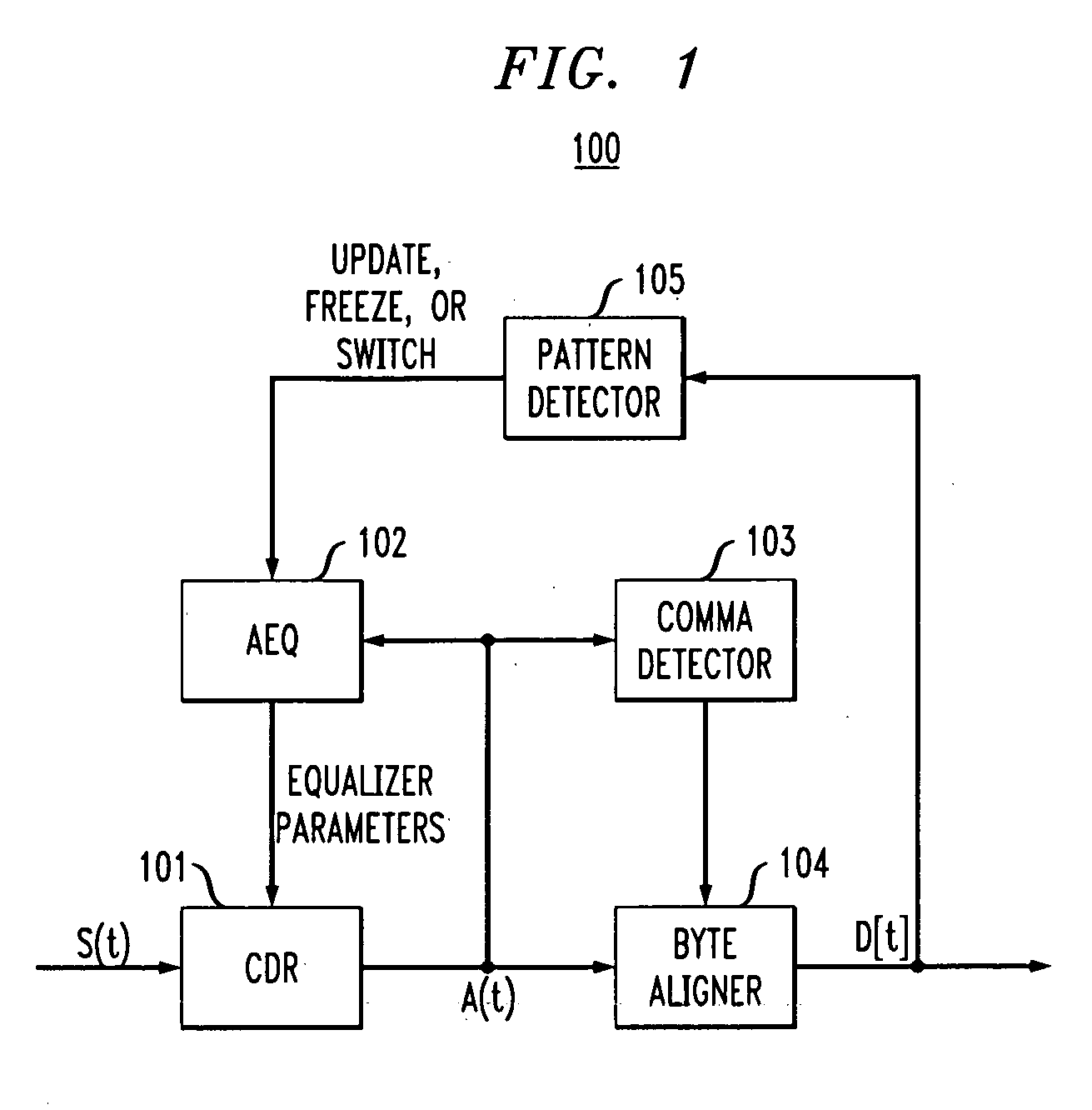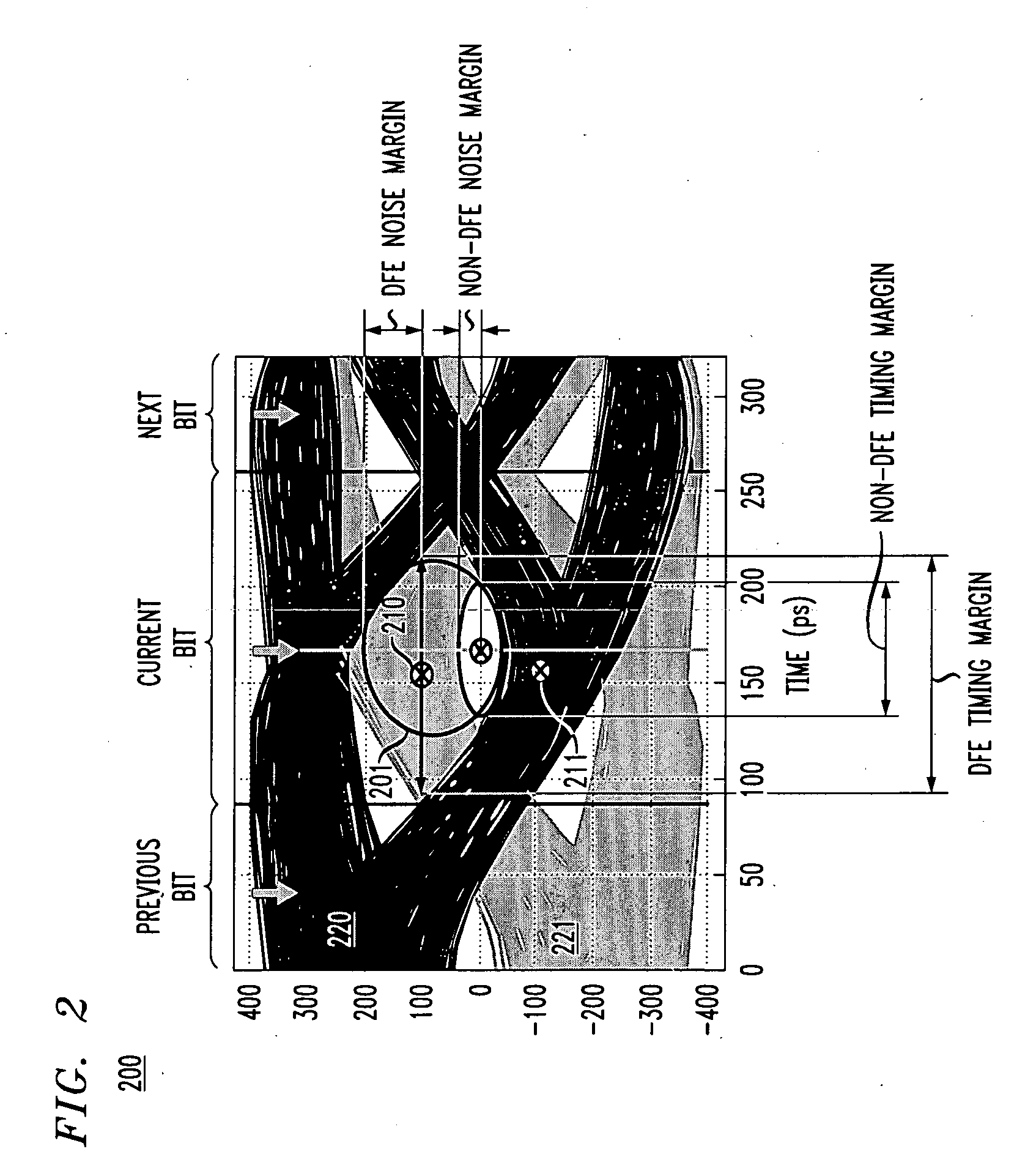Adaptive equalization employing pattern recognition
a pattern recognition and adaptive equalization technology, applied in the field of communication systems, can solve problems such as serdes receiver performance in general, emi degradation increase, and lower device cos
- Summary
- Abstract
- Description
- Claims
- Application Information
AI Technical Summary
Benefits of technology
Problems solved by technology
Method used
Image
Examples
Embodiment Construction
[0021]In accordance with exemplary embodiments of the present invention, an adaptive equalizer employed by a receiver in a communication channel, such as Fibre Channel, employs pattern recognition for setting of equalization parameters. When a repeating pattern, such as an IDLE or ARBFF pattern, is employed by a standard to, for example, maintain a communication link, an equalizer of the receiver might adaptively set its equalizer parameters based on characteristics of the signal energy of the repeating pattern rather than adaptively set its equalizer parameters based on characteristics of the signal energy of generally random user data carried on the link. Pattern recognition by the receiver allows for maintaining adaptive equalizer parameters at settings preferred for data detection of, for example, the typical random data, improving data detection performance of the receiver when the channel transitions from idle pattern data to user data.
[0022]Operation of an exemplary (e.g., Se...
PUM
 Login to View More
Login to View More Abstract
Description
Claims
Application Information
 Login to View More
Login to View More - R&D
- Intellectual Property
- Life Sciences
- Materials
- Tech Scout
- Unparalleled Data Quality
- Higher Quality Content
- 60% Fewer Hallucinations
Browse by: Latest US Patents, China's latest patents, Technical Efficacy Thesaurus, Application Domain, Technology Topic, Popular Technical Reports.
© 2025 PatSnap. All rights reserved.Legal|Privacy policy|Modern Slavery Act Transparency Statement|Sitemap|About US| Contact US: help@patsnap.com



